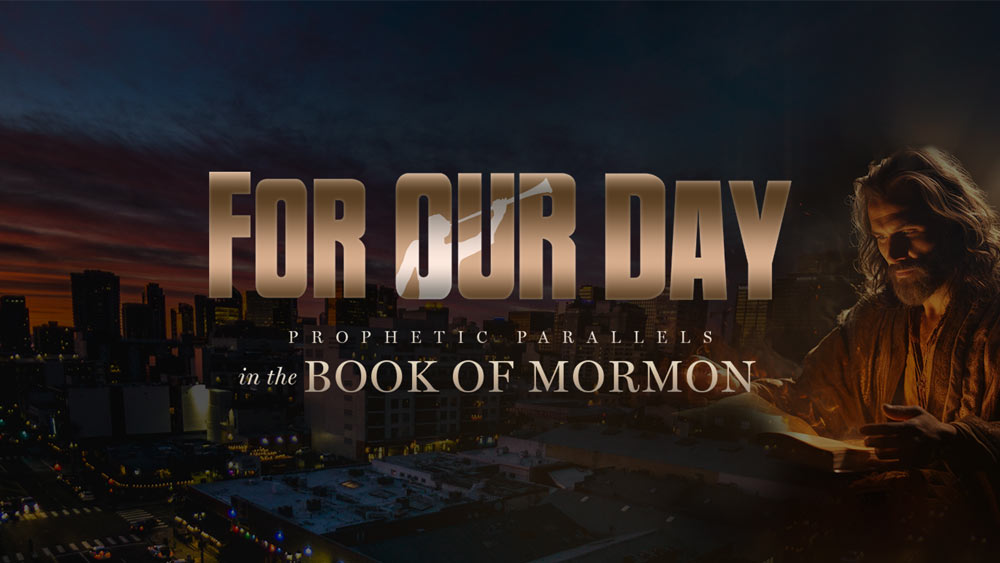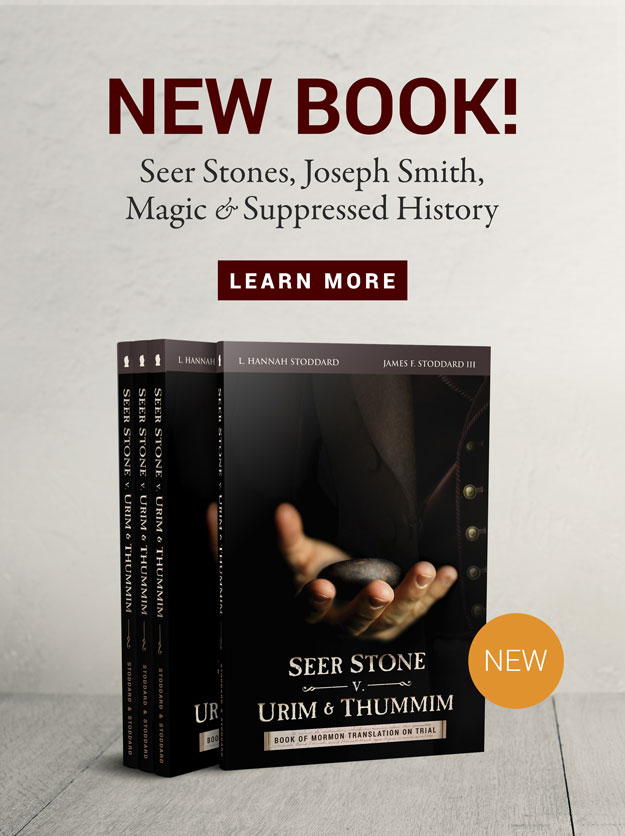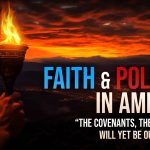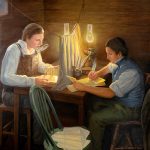What I know concerning God, concerning the earth, concerning government, I have received from the heavens, not alone through my natural ability, and I give God the glory and the praise. Men talk about what has been accomplished under my direction, and attribute it to my wisdom and ability; but it is all by the power of God, and by intelligence received from him.
(Brigham Young, Journal of Discourses, 26 vols. [London: Latter-day Saints’ Book Depot, 1854-1886], 16: 46.)
As early as 1871, Brigham Young had envisioned education free of government money and influence so that real education take place. In 1876, Brigham Young opened the Brigham Young Academy, a private school personally purchased by himself. He asked Karl G. Maeser to go to Provo to establish a church school, explaining, “Brother Maeser, I want you to remember that you ought not to teach even the alphabet or the multiplication tables without the Spirit of God.”
School started precisely at 8:45 a.m. He instituted daily worship assemblies, graded the classes, demanded discipline and courtesy, inspired his students in their studies, and organized a “normal” class — training teachers — his specialty. Principal Maeser was able to successfully combine academic concerns, religious beliefs, and character development as part of the students’ education.
The school had a reputation for academic excellence. The academy deed of trust (overseen personally by President Young) specifically required that the Bible, Book of Mormon and other LDS scriptures would be among the school’s standard textbooks and that nothing would be taught conflicting with church principles or doctrine. The school’s foundation was “to assist the Priesthood” by promoting religious as well as academic knowledge.
A fallacy in government education was the division of moral instruction on the one hand and academic instruction on the other. Government schools had assisted in the creation of an out of balanced society that was “ever learning and never able to come to the knowledge of the truth.” David O. McKay taught:
“True education does not assist merely in the acquiring of a few facts of science, history, literature, or art, but in the development of character. True education awakens a desire to conserve health by keeping the body clean and undefiled. True education trains in self-denial and self-mastery. True education regulates the temper, subdues passion, and makes obedience to social laws and moral order a guiding principle of life. It develops reason and inculcates faith in the living God as the eternal, loving Father of all.” (Conference Report, April 1932, p. 64).
President John Taylor encouraged Saints to get the vision of the Lord’s education program. He directed:
“Establish schools taught by those of our own faith, where being free from the trammels of State aid, they could unhesitatingly teach the doctrines of true religion combined with the various branches of general education. . . . [Youth] should be made familiar with the contents of the Bible, Book of Mormon and the Book of Doctrine and Covenants. These should be their chief textbooks . . . but under the common school system this is not possible . . . We would like to see schools of this character, independent of the District School System started in all places where it is possible.” (James R. Clark, Messages of the First Presidency, Vol. 3. Salt Lake City: Bookcraft, Inc., 1966. p. 5 and an epistle delivered at General Conference, October, 1886.)
Meeting the Brigham Young Academy’s chartered criteria, the entire educational program was centered around a gospel frame-work to ground children firmly in church teachings. Eleven years after its’ beginning, the Deseret News reported that “ninety-five percent of students [became] in a few weeks intensely interested in the Gospel.” Deseret News, June 11, 1888.
When President George Albert Smith was a boy, he had an experience that changed his life. He wrote:
“As a child, thirteen years of age, I went to school at the Brigham Young Academy. … I cannot remember much of what was said during the year that I was there, but there is one thing that I will probably never forget. … Dr. Karl G. Maeser one day stood up and said, ‘Not only will you be held accountable for the things you do, but you will be held responsible for the very thoughts you think.’
“Being a boy, not in the habit of controlling my thoughts very much, it was quite a puzzle to me what I was to do, and it worried me. About a week or ten days after that I suddenly understood what he meant: You will be held accountable for your thoughts, because when your life is completed in mortality, it will be the sum of your thoughts. That one suggestion has been a great blessing to me all my life, and it has helped me on many occasions to avoid improper thoughts, because I realize that when my life is over I will be the product of my thoughts.” (Sharing the Gospel with Others [Salt Lake City: Deseret Book, 1948], pages 62–63).
While dedicating the Salt Lake Temple, President Woodruff prayed:
“Nor would we forget, O Lord, the normal training classes among thy people . . . Grant that these classes may be the means of spreading true education throughout all the borders of the Saints by the creation of a body of teachers who will not only be possessed of rare intelligence, but be filled also with the spirit of the gospel, and be powerful in the testimony of thy truth and in implanting a love for thee and for thy works in the hearts of all whom they instruct.”
When establishing Brigham Young Academy, the forerunner of Brigham Young University, Brigham Young stated clearly his purpose in its endowment:
“We have enough and to spare, at present in these mountains, of schools where young infidels are made because the teachers are so tender-footed that they dare not mention the principles of the gospel to their pupils, but have no hesitancy in introducing into the classroom the theories of Huxley, of Darwin, or of Miall, and the false political economy which contends against co-operation and the United Order. This course I am resolutely and uncompromisingly opposed to, and I hope to see the day when the doctrines of the gospel will be taught in all our schools, when the revelation of the Lord will be our texts, and our books will be written and manufactured by ourselves and in our own midst. As a beginning in this direction I have endowed the Brigham Young Academy at Provo.” (Brigham Young, Letters of Brigham Young to His Sons, p. 200)
President Young saw the dangers of false philosophies and desired Church schools to combat them. The two primary concerns that rested upon President Young from the above statement are Darwinism (Darwinian evolution) and Marxism (socialism/communism). The Presidents of the Church have continually warned of the dangers of teaching that man descended from lower forms of life and President Young was no exception. President Young felt that the theories of Charles Darwin and Thomas Huxley, who was known as “Darwin’s Bulldog” for his advocacy of the theories of organic evolution, were corrupting the youth among the Saints in his day. Because of this, he used his own financial means to create an academy where these false philosophies could be refuted. Additionally, President Young felt that socialism, the political outgrowth of evolution, should also be countered.
If you are looking for an online education resource with a similar mission to that of the original Brigham Young Academy, please visit: www.josephsmithfoundation.org.
Joseph Smith Academy, a division of Joseph Smith Foundation, is a free educational resource for families and individuals dedicated to “scholarship founded on revelation”. The Internet is filled with information, some critical to understand, most non-essential and the balance very destructive. Of the critical information, that which is most often overlooked is the inspiring and sacred. Joseph Smith Academy has a team of individuals dedicated to finding and organizing uplifting materials from across the world and then making these materials available to families in their own home using the latest Internet technologies. These materials include: interactive timelines, maps, wikis, audio and so forth. All free and available online on your computer or from your iPad or mobile phone.








One Response
Hello Hanna,
I dint know where to begin! I am overwhelmed with passion and excitement ad can’t wait to read all of your books and to learn everything I can! I have to get involved with this foundation, I can feel it in my soul! What opportunities are available to help in this fantastic organization?